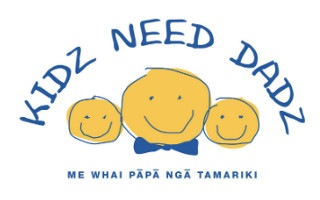Meningitis
As the juggernaut of meningitis immunisation rolls south over the country, critical voices mount. Mark Stephenson has examined the facts—and finds the case for immunisation is sound.
Every winter the papers are full of the epidemic of meningococcal disease. A person feels a bit fluey, possibly with headache, for a few hours only.
If they don’t receive antibiotics they may be dead by the next day. It’s a tragic waste of a young life. The press ride the wave of hysteria gleefully. It is a worrying season for all parents.
Now a new vaccine is being given to young people who are most at risk. There is anxiety about this as well. Will it be harmful? Do we need it? Doubts and fears abound. Doubt is a sign of intelligence but fear prevents clear thinking. We need to know that the new vaccine will work, save lives, and that it is not harmful.
What about our own natural immunity? When a bug, say a flu virus, enters your body for the first time your immune system makes two things:
– Antibodies that kill the virus
– Cells in the blood, lymphocytes, which have a ‘memory’ of the bug.
This is the ‘primary’ immune response. You feel ill but your body is working hard to protect you.
If you meet that germ again, your immune system is primed.
It ‘remembers’, and floods your system with antibodies aimed at that particular virus. You don’t feel ill because the virus is destroyed quickly. This is the ‘secondary’ immune response.
Immunisation mimics the immune system. Part of a germ, or an inactivated virus that can’t cause illness, is given. This stimulates the immune system to produce antibodies and ‘memory’ lymphocytes.
Later, if the real germ is taken on board, the body mounts a rapid secondary response and fights it off without the illness occurring. If enough people are immune to a bug, it rarely causes illness in the community, even in the un-immunised, as there is not enough of it around. This is called ‘herd immunity’.
Our immune system, like that of animals, is a neat adaptation but it is not perfect. People become ill, and sometimes die of infections. This is natural. However, it causes much human suffering. Some might say we have to accept this; others feel we have a duty to reduce suffering if we can.
 New Zealand has the highest rate of meningococcal disease in the developed world. Between 1991 and the end of 2003, it affected 5293 people. Many have been left permanently maimed or deaf. Two hundred and sixteen died. On average, that’s 14 or 15 deaths each year. Eighty per cent of these were people under 20 years of age. Children under 1 year are most at risk.
New Zealand has the highest rate of meningococcal disease in the developed world. Between 1991 and the end of 2003, it affected 5293 people. Many have been left permanently maimed or deaf. Two hundred and sixteen died. On average, that’s 14 or 15 deaths each year. Eighty per cent of these were people under 20 years of age. Children under 1 year are most at risk.
Some New Zealanders are more likely to be affected. A Pacific Island child has a 1 in 66 chance of catching it by the age of 5 years. A Maori child has a 1 in 117 chance, and for ‘European’ children, 1chance in 438. However, there are more Pakeha children so they make up a third of those affected.
There are different types, or strains, of meningococcal bacteria. In New Zealand a particular strain of Group B meningococcus is responsible for over 70% of cases. It is this strain that the new vaccine is aimed at.
Why is this bug, the meningococcus, so dangerous?
– Well, firstly, 20% of us have it living quietly in our nose and throats. So it is always around. Occasionally it invades the blood stream or lining of the brain (the meninges), causing septicaemia or meningitis respectively.
– Secondly, it has a special coat, or capsule, which the body’s immune system cannot recognise. This means the bug can overwhelm us before we can produce antibodies against it.
The vaccine, MeNZB, is tailor-made for the New Zealand strain. It is expected to cut the number of cases by over 70%. This will occur if 90% of those between 6 months and 20 years of age receive the vaccine as planned. Immunisation has started in South Auckland already, and will progress around the country over the next 18 months.
OK, but will it work? In the recent New Zealand clinical trial, children were given 3 doses, 6 weeks apart. Seventy-five percent of them produced high levels of their own protective antibodies. Even with lower levels, most of the others should be protected from the disease.
In Cuba there was a similar epidemic. Meningococcal disease affected 14 people out of every 100,000/ year before immunisation started. Now less than 1 person per 100,000 catches it. The vaccine has been part of their childhood immunisations for nearly twenty years.
But is it safe? Good question. When deciding to give a vaccine to otherwise healthy people, this is the most important consideration. Similar vaccines have been used in Chile, Brazil, Cuba and Norway. In trials in Norway 180,000 people had no serious adverse reactions due to the vaccine.
In a trial in Chile only one person had a serious allergic reaction out of 40,000. Around 60 million doses have been given in Latin America.
The main problem is that the injection causes pain. The local reaction to the vaccine is usually mild, meaning a child cries if the injection site is touched. In 10-20%, however, the child may have pain when the injected leg is moved. This improves after 2 days.
Not surprisingly, 40% of small children seem irritable afterwards. Ten per cent have a fever over 38 degrees. It will not prevent disease caused by the less common strains of meningococcus. It cannot eradicate the germ from those simply carrying it in their throats. So ‘herd immunity’ will probably not occur. Un-immunised people will still be at risk.
Some people fear the antibodies produced by vaccines may harm us. Surely it’s not right to put foreign material into ourselves.
– Germs invade our bodies continually in childhood, that’s how we develop immunity. Unfortunately, the meningococcus doesn’t play by the rules.
– Billions of doses of vaccines have been given worldwide, including during the eradication of smallpox. There’s no evidence that immunisation produces antibodies that attack our own bodies (so called ‘auto-immune’ diseases were around long before vaccination).
– We intentionally put foreign stuff in our bodies all the time (ever been to McDonalds?).
What if Helen Clark is in cahoots with the drug company making the vaccine? Scepticism is a healthy response where there is doubt, especially where government and multi-national companies are involved. Unfortunately most conspiracy theories rely on suspicion and fear rather than information.
If you believe the government is knowingly spending tax dollars on a scheme that will harm our children, only to profit a few, I suggest armed revolution as the appropriate response.
We make decisions based on our knowledge and experience, our world view and our politics. There are two decisions to make here. One is for our children and ourselves. The other is whether we act as a community to protect all its members.
The vaccine is safe and effective, but it hurts.
What will you decide?
Next: Constructive Conflict




